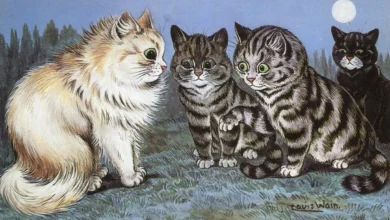Art:9utd8fospwy= 1960S

The Art:9utd8fospwy= 1960S served as a pivotal decade in the evolution of contemporary art, marked by the rise of movements such as Pop Art and Minimalism that fundamentally challenged established norms. Key figures, including Andy Warhol and Donald Judd, not only redefined artistic expression but also engaged with the broader socio-political currents of their time. As these artists navigated the complexities of consumer culture and individual identity, the implications of their work extended far beyond the canvas. The question arises: how have these transformative ideas shaped the trajectory of modern artistic practices?
Key Art Movements
The Art:9utd8fospwy= 1960S were a pivotal decade in the evolution of contemporary art, marked by the emergence of several key movements that challenged traditional notions of artistic expression.
Pop art celebrated consumerism and mass culture, using vibrant imagery to critique societal norms, while minimalist art stripped down aesthetics to their essence, emphasizing simplicity and form.
Together, these movements redefined artistic boundaries and encouraged individual freedom in expression.
Read more: Art:7bq0yl9eb0a= Noes
Influential Artists
Emerging from the vibrant tapestry of the 1960s art scene, influential artists such as Andy Warhol, Roy Lichtenstein, and Donald Judd played pivotal roles in shaping the direction of contemporary art.
Warhol’s pop art celebrated consumer culture, while Lichtenstein’s comic-inspired works bridged fine art and popular imagery.
Meanwhile, Judd’s minimalist approach evolved from abstract expressionism, emphasizing form and spatial relationships, redefining artistic boundaries.
Social and Political Context
During the 1960s, artists increasingly tapped into the tumultuous social and political landscape that characterized the era, reflecting the upheavals of civil rights movements, anti-war protests, and a burgeoning counterculture.
This period witnessed a profound engagement with issues of freedom and identity, as art became a potent vehicle for expressing dissent and envisioning alternative social realities, ultimately reshaping the artistic narrative of the decade.

Lasting Impact on Art
Transforming the artistic landscape, the 1960s left an indelible mark on subsequent generations of artists and movements.
This era catalyzed profound cultural shifts, challenging traditional paradigms and inspiring an aesthetic evolution that embraced experimentation and individual expression.
The legacy of this decade continues to resonate, influencing contemporary art practices and encouraging a dialogue around freedom, identity, and the collective human experience.
Read more: Art:9thaa-T1vm8= Bongo Cat
Conclusion
The 1960s served as a pivotal decade in the evolution of Art:9utd8fospwy= 1960S, with movements such as Pop Art and Minimalism emerging in response to societal changes. Notably, the exhibition “The American Supermarket,” organized by Andy Warhol in 1964, showcased the intersection of art and consumer culture, attracting over 2,000 visitors in its first week alone. This era not only redefined artistic expression but also left an indelible mark on contemporary practices, fostering ongoing discussions about identity and freedom.





